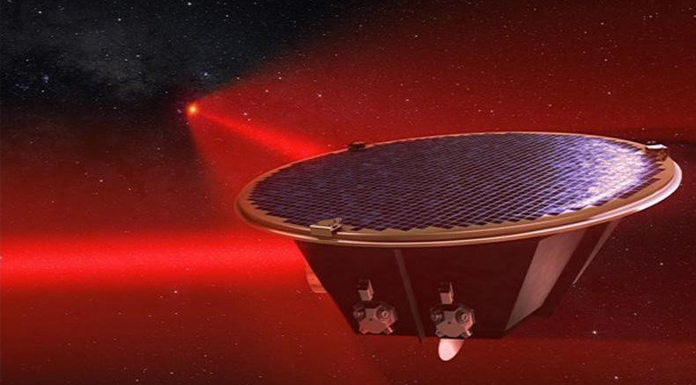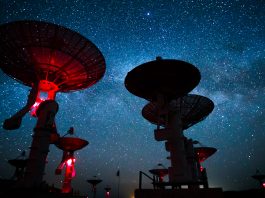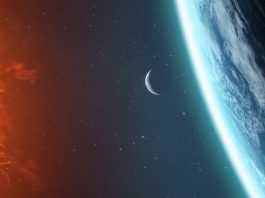Professor Kinwah Wu from University College London’s Mullard Space Science Laboratory discusses high-precision astrophysics in the context of multi-messenger studies of gravitational radiation sources consisting of a spinning pulsar inspiralling into a massive black hole.
The detection of gravitational waves from the coalescence of black holes by the LIGO (Laser Interferometer Gravitational-Wave Observatory) and the discovery of an electromagnetic counterpart of a gravitational wave source caused by a merging pair of neutron stars have opened up a new paradigm for the study of fundamental physics and astrophysics using a multi-messenger approach, involving gravitational waves and electromagnetic radiation, as well as non-photonic particles.
Gravitational wave and multi-messenger astronomy
Einstein’s theory of gravity elaborates that spacetime can be curved by the presence of a mass and the curvature of spacetime is manifested as gravity. The theory is built upon the equivalence principle, in which the equality between inertial mass and gravitational mass leads to the acceleration of an object under gravity being independent of the nature and hence internal constituent of the object. Thus, a free-falling object under gravity follows a geodesic in the spacetime. A particular family of geodesics is that of photons, which are massless particles that are practically timeless in the local reference frame comoving with the particles.
In 2015, gravitational waves (GW) were detected from the source GW150914, which was a pair of black holes in coalescence, by LIGO. This verified a prediction of Einstein’s theory of gravity, that is, GWs are emitted by orbiting masses. It also provided strong evidence for the existence of black holes. Soon after in 2017, the electromagnetic counterpart of a GW source, GW170817, a merging pair of neutron stars, was discovered. This opened up the paradigm of multi-messenger studies of astrophysical objects, with GW firmly as a key messenger.
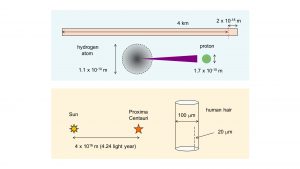
Towards high-precision astrophysics
While the LIGO and Virgo interferometers have been in action, the coming of the KAGRA (Kamioka Gravitational Wave Detector) and IndIGO (the Indian Initiative in Gravitational-wave Observation) will further strengthen the position of GW physics.
Future observatories such as the ET (Einstein Telescope) on the ground and the LISA (Laser Interferometer Space Antenna) (see Fig. 1) in space will provide more new opportunities in the exploration of relativistic astrophysics and the fundamental aspects of gravitational physics.
From the perspective of multi-messenger studies of the GW sources, radio telescopes such as the FAST (Five-hundred-meter Aperture Spherical Telescope) and the SKA (Square Kilometre Array) are particularly important, as violent astrophysical systems are very often associated with the production of energetic charged particles, which emit electromagnetic waves in the radio wavebands. In some cases, the energetic particles would participate in subatomic interactions, resulting in the subsequent production of high-energy gamma-ray and even neutrinos.
The measurement of GW is demanding. It involves tracking a space-time deformation of the order of one part in 1020 or even smaller. The measurement of a change in 2×10-18m in an arm length of 4km of LIGO is analogous to resolving a fraction of the thickness of a human hair placed on the closest star to the Sun, Proxima Centauri, from the Earth (see Fig. 2). Radio astronomy is almost equally as impressive in precision but in the time domain. With the stability of the spin of milli-second pulsars (MSP), radio timing measurements can establish the drift of only a fraction of a MSP spin period through the Hubble time.
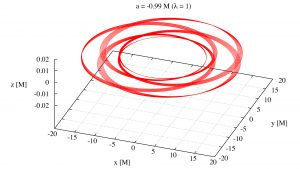
Challenges in studying fundamental physics with a multi-messenger approach
The precision achieved by GW experiments and radio pulsar timing measurements have given us a means to study a variety of fundamental physics. Some examples are the violation of the equivalent principle, gravitational wave self-force, and the non-geodesic motion of photons or non-photonic particles in the strong gravity.
The equivalence principle can be violated in a binary system consisting of fast spinning neutron stars orbiting around a massive black hole. The neutron star’s spin would interact with its own orbit around the black hole as well as with the space-time curvature due to the black hole’s gravity. This gravitational spin-orbit coupling is analogous to the electromagnetic spin-orbit coupling of an electron around a proton in a hydrogen atom. The spin-curvature coupling, however, does not have a clear classical analogue. Because of these spin couplings, the neutron star will not follow a geodesic motion and may even have non-planar orbital motion (see Fig. 3). This non-planar orbital motion can be detected if the neutron stars is a radio pulsar. The neutron star-black hole binary would emit GW, and the GW remove the orbital angular momentum. The neutron star will eventually spiral into the black hole, and this class of binaries are known as the Extreme-Mass-Ratio-Inspiralling (EMRI) systems. EMRI are target sources of the LISA Observatory, and they are useful systems for the study of spacetime properties and of dynamical processes in strong gravity, such as spin-curvature interaction and self-force in GW production.
The presence of a radio pulsar in the EMRI systems make these binaries also detectable in the electromagnetic domain. Another group of GW sources with electromagnetic counterparts are the neutron star-neutron star mergers. However, quantifying the properties of the electromagnetic radiation from EMRI and merging neutron stars requires not only the understanding of the relevant physical processes but also how electromagnetic radiation and high-energy particles propagate in a spacetime that is no longer stationary and in the presence of plasma effects.
If the messenger particles are not massless and can transform between species, e.g. neutrinos, there will be more complications. Clearly, the current form of covariant radiative transfer, formulated in a framework of conservation along null geodesics on a stationary spacetime background, is no longer applicable, and a new transport formulation is therefore required so as to fully utilise the information provided by the high-precision measurements in the observations of GW, electromagnetic radiation, and non-photonic particles.
Professor Kinwah Wu
Professor of Theoretical Astrophysics
Mullard Space Science Laboratory
University College London
+44 1483 204 127
Kinwah.wu@ucl.ac.uk
www.ucl.ac.uk/mssl/
Please note, this article will also appear in the third edition of our new quarterly publication.

